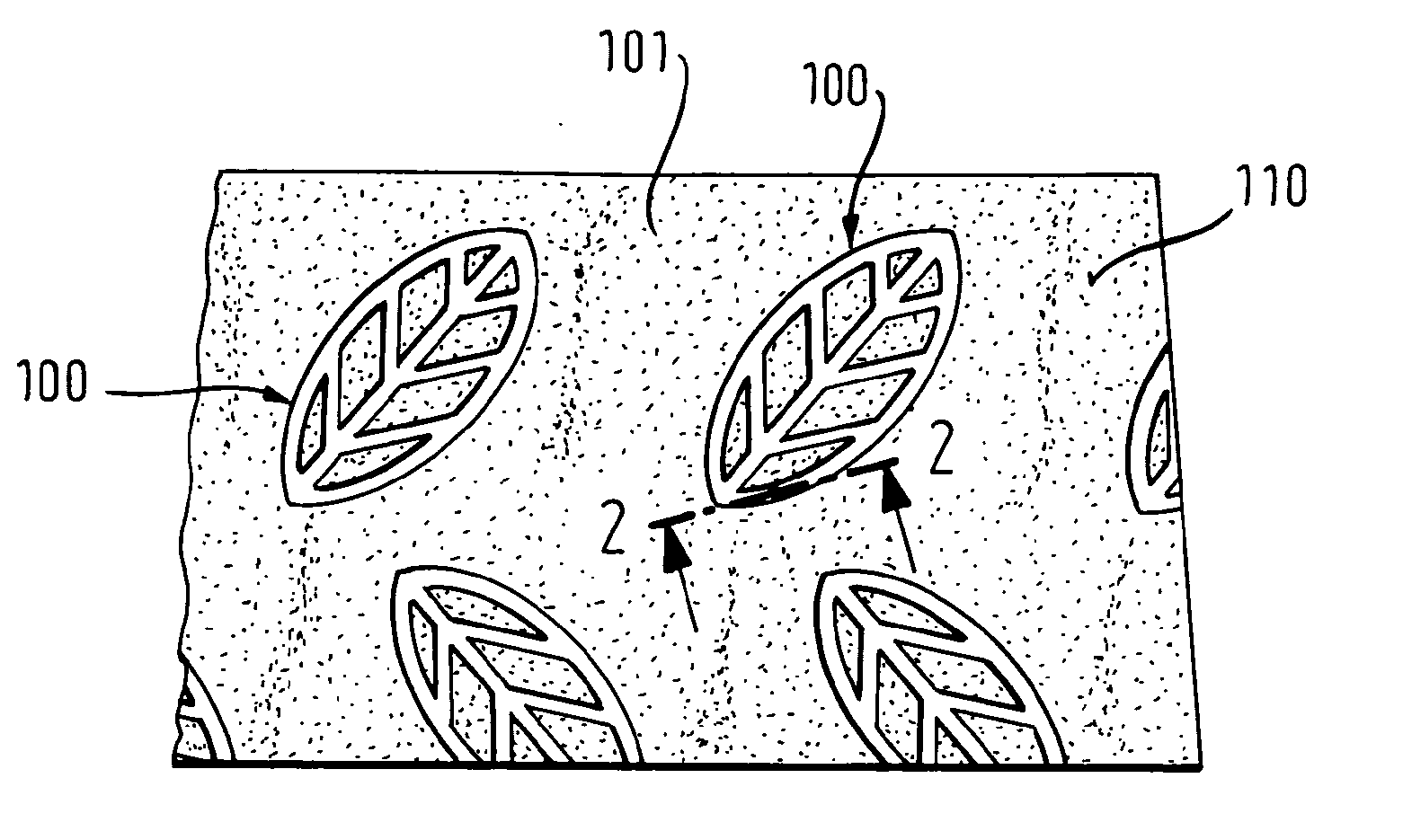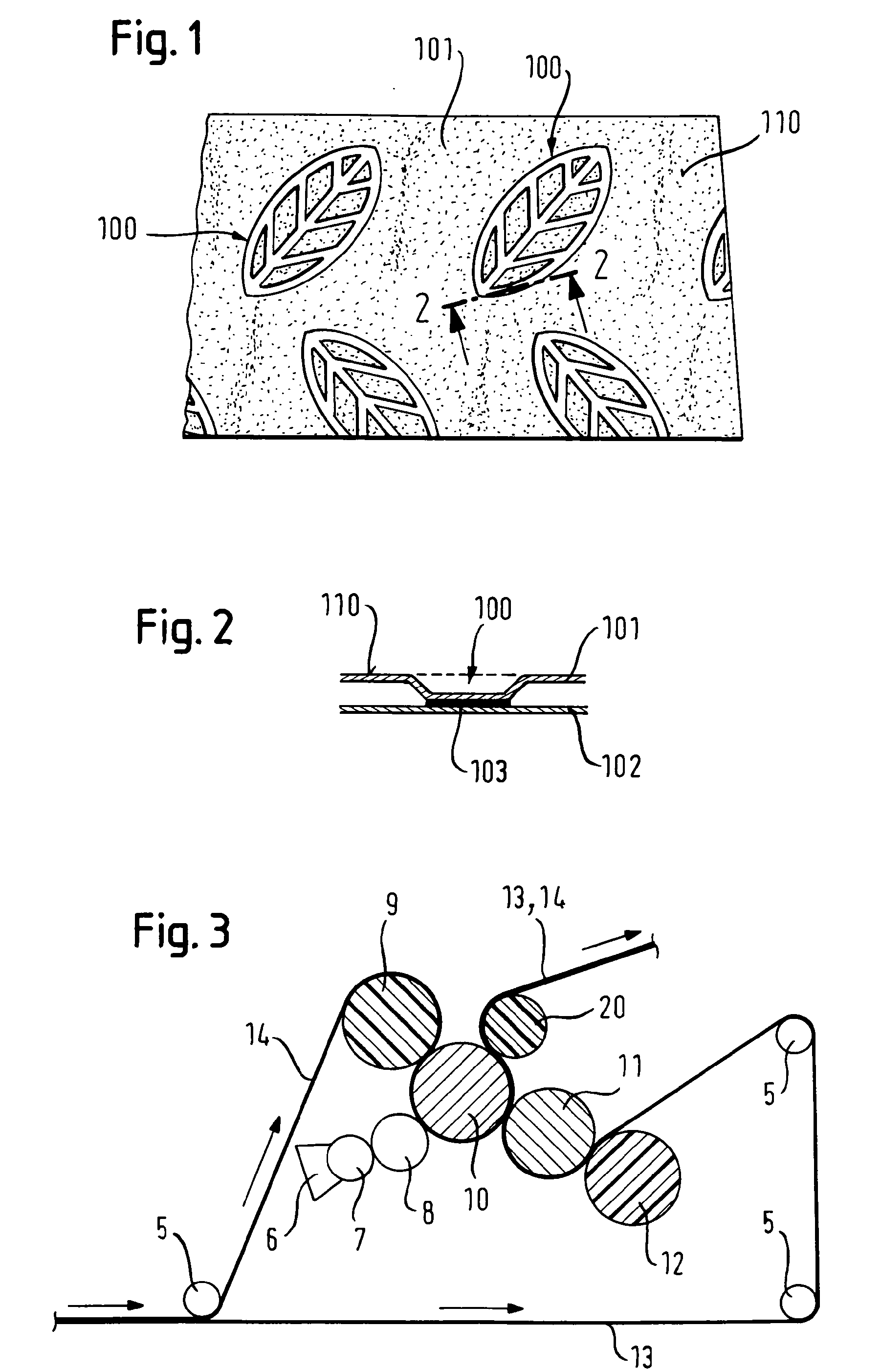Hygiene or wiping product comprising at least one patterned ply and method for patterning the ply
a technology of hygiene or wiping and patterned ply, which is applied in the direction of duplicating/marking methods, lamination, decorative arts, etc., can solve the problems of inability to achieve sharply contoured graphical elements in all circumstances, color compound may bleed into the remaining parts of the web, and is difficult to handl
- Summary
- Abstract
- Description
- Claims
- Application Information
AI Technical Summary
Benefits of technology
Problems solved by technology
Method used
Image
Examples
Embodiment Construction
[0052]FIG. 1 is a perspective view of a multi-ply toilet paper made of tissue paper comprising two plies, an upper ply 101 and a lower ply 102. One sheet of the toilet paper is depicted. The upper ply 101, which is shown in bird's view in FIG. 1, is a fibrous ply of tissue paper containing cellulose fibers. The second ply 102 may be of the same or a different material. The toilet paper has a graphical pattern with graphical elements 100 in the form of leaves. The leaves form the second area of the pattern, whereas the remaining parts 110 of the upper ply constitute the first area. In the shown embodiment, the first area 110 is provided with a coloration, e.g. light blue and, therefore, contains a coloring compound which has the capacity of absorbing certain wavelength of light preferentially so that the first area 110 appears light blue. The second area in form of the leaves 100 in the present embodiment is less colored than the first area 110. That is, the leaves have a blue color ...
PUM
| Property | Measurement | Unit |
|---|---|---|
| density | aaaaa | aaaaa |
| density | aaaaa | aaaaa |
| density | aaaaa | aaaaa |
Abstract
Description
Claims
Application Information
 Login to View More
Login to View More - R&D
- Intellectual Property
- Life Sciences
- Materials
- Tech Scout
- Unparalleled Data Quality
- Higher Quality Content
- 60% Fewer Hallucinations
Browse by: Latest US Patents, China's latest patents, Technical Efficacy Thesaurus, Application Domain, Technology Topic, Popular Technical Reports.
© 2025 PatSnap. All rights reserved.Legal|Privacy policy|Modern Slavery Act Transparency Statement|Sitemap|About US| Contact US: help@patsnap.com


